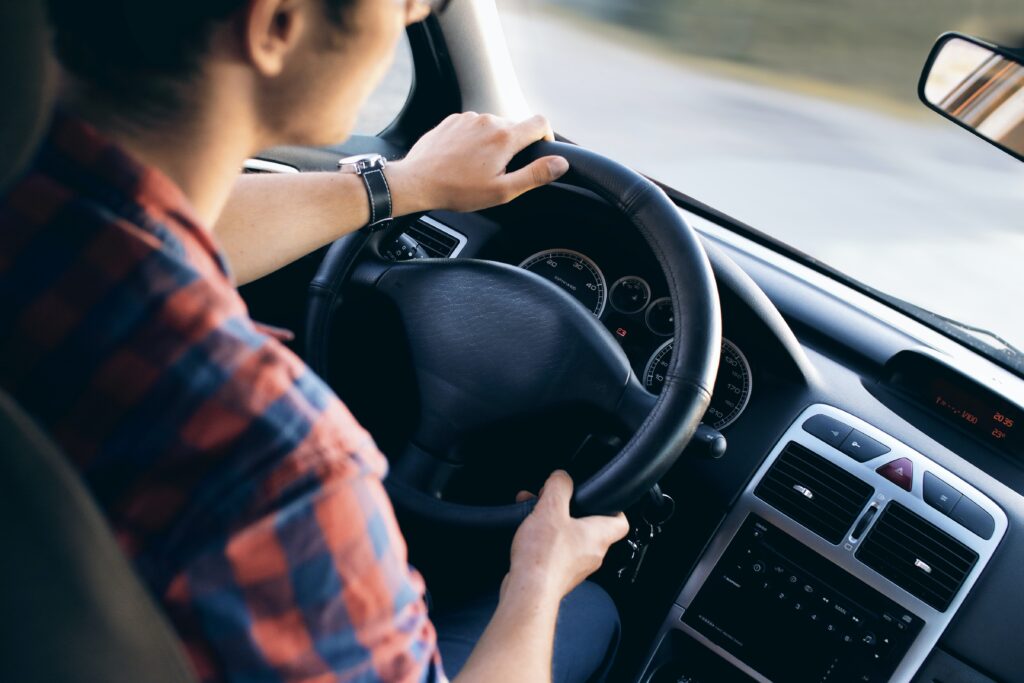You look over a car and think it looks great by your standards. Now it’s time to get it on the road for a test drive!
One of the most important steps in the used car buying process is the test drive. A test drive allows you to get a feel for the car’s overall condition, giving you valuable insight into whether it’s the right vehicle for you.
A vehicle can look nice and dandy when inspected, but it could potentially reveal problems upon a test drive. But how do you go about testing a used car?
In this article, we’ll provide you with tips and tricks on how to test drive a used car, so you can make the right decision before handing over the cash.
Did you know that the listing price of a used car is not what the owner truly expects to get out of the vehicle? Find out how to negotiate down the price of a used car by signing up for my email list. You will receive a free small guide packed with the essential tips for successfully negotiating the price of a used car.
First Things First
Only test drive a car if you are seriously considering buying it; you want to respect the owner’s time. You can ask the owner to come with you for a test drive or give your keys to the owner as collateral if you’re going alone (just make sure you don’t have anything of value in your vehicle if you do this).
A huge red flag to watch out for is if the owner of the car declines a test drive. I would walk away immediately if this situation happened to me because it signals that there may be something wrong with the vehicle once you start to drive it that the owner is not telling you about.
If the owner allows you to test drive the car, be clear about what you’re going to be doing with the car and where you will be taking it. You will want to perform a variety of tests, like full-lock turning, emergency braking, acceleration, city driving, and freeway driving.
Now that we got that out of the way, here’s how you test drive a used car.

Test Driving in a Parking Lot
The first thing you should do before taking the car onto the road is perform a series of tests in a parking lot to ensure that it will be safe to drive.
The first test should be to test the car’s brakes. You want to make sure that the brake pedal feels firm and not spongy. It should stop smoothly, not vibrating or lurching when pressing the brake pedal, as these could indicate that the rotors are warped and need to be replaced.
You’ll want to do some emergency braking just to make sure that the anti-lock braking system (ABS) is activating. Accelerate up to about 20 mph and hit the brake pedal hard. You should see a light come on your dash that says “ABS,” indicating that the system is working.
The next test is turning the steering wheel until it’s fully locked out on both sides to hear for any unusual noises. You don’t want to be hearing any popping or whining noises when fully locked out on either side, because these could indicate bad suspension components or a bad power steering pump, respectively.

Testing Driving on the Road
Now it’s time to take the car out on the road. When getting on the road, listen to and feel the transmission of the car going through the gears. The transmission should shift the gears smoothly and at the right time. It shouldn’t be bucking you around or feel like it’s not shifting at the right times.
A transmission is one of the most expensive components of your vehicle to repair, so you do not want to be buying a car with a bad one!
Once you’re up to speed, make sure the steering wheel stays straight and doesn’t want to pull to one side or shake. Just loosely hold onto the steering wheel to see if it starts to do anything. A steering wheel that pulls to one side or vibrates can indicate worn suspension parts.
Also, consider intentionally hitting some light bumps in the road to see how the car’s suspension reacts to them. The suspension should rebound smoothly and not be harsh or make popping sounds when going over a small bump.
Keep an eye on the dash to make sure no check engine or warning lights come on during your drive. Also, periodically check the temperature gauge to make sure the car is not overheating.
Use those ears of yours to listen for any whistling noises, as these noises could indicate the door or window seals are going bad.
Test out some light braking to see if the car vibrates or wants to pull to one side. The brakes should always stop the car smoothly and straight ahead.
Once the car fully warms up, ensuring that it’s not overheating first, play around with the heat and air conditioning to see how well they heat up or cool down the cabin of the car. These two components of a car can be expensive to fix if they are not working properly. Use your nose to smell the air coming from the vents, making sure you don’t smell mold or exhaust coming from them.
You should consider flooring the vehicle just to make sure that the engine and transmission aren’t struggling under a heavy load, not because you want to see how much power this baby has. Again, just let the owner know that you will be doing this to make sure that the engine and transmission are running properly under load.

Testing Driving on the Highway
So now you want to see how the car drives on the highway, because higher speeds can reveal problems that went unnoticed while city driving. The same principles from regular road driving apply to highway driving.
Again, the suspension should be smooth, the steering wheel shouldn’t be pulling or vibrating, light braking shouldn’t pull or vibrate the car, and you shouldn’t hear any whistling from any of the doors or windows.
Onto the Negotiation Process
If everything seems to be in working order, you are on your way to purchasing your next car! The next and most important step is the negotiation process for the car.
If you would like to learn more about how to negotiate the price of a used car to get the most value for your money, sign up for my email list by filling out the form below:

